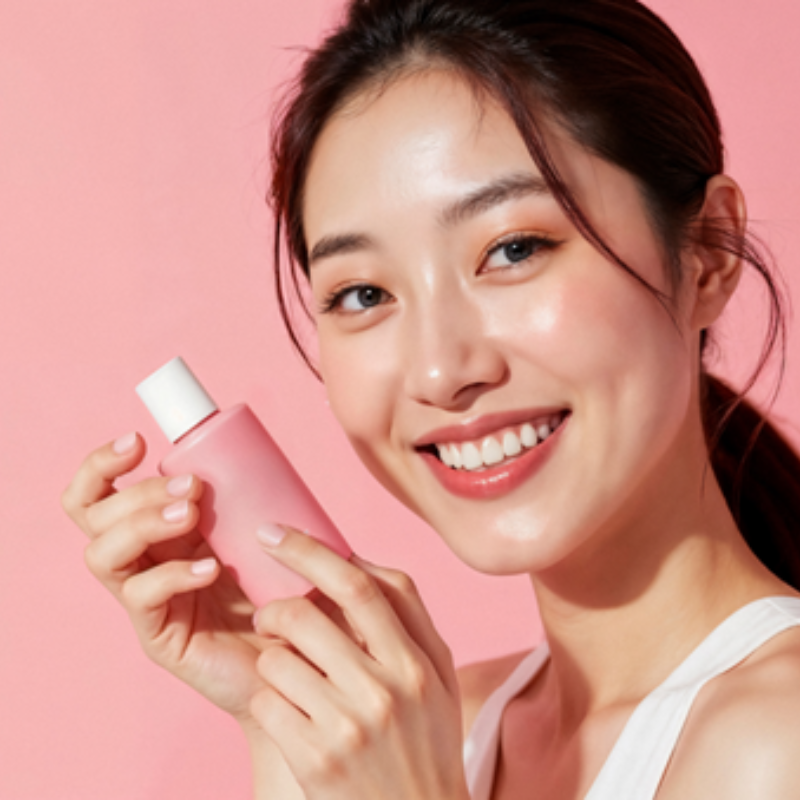Cosmetics have long been recognized for their positive impact on well-being, influencing both psychological and emotional states. Their use in beauty routines fosters self-confidence and self-esteem, offering individuals a sense of control over their appearance. Additionally, personal care products serve as tools for relaxation, providing a sense of calm and serenity. This experience is particularly sought after in spa settings, where aesthetic treatments and massages help consumers achieve a better balance between body and mind.
The increasing adoption of a holistic approach to cosmetics reflects the growing consumer demand for products that consider the interconnectedness of body, mind, and environment. Holism emphasizes that all parts of a system are interdependent, suggesting that beauty should not be viewed as a collection of isolated experiences but as a comprehensive, integrated process. This philosophy resonates with consumers who seek cleaner, more natural beauty solutions, aligned with their values of social responsibility. These values include sustainability, ethical sourcing, and respect for both human and environmental welfare, influencing the entire cosmetics supply chain, from ingredient sourcing to manufacturing and usage.
The skin, often referred to as the “second brain,” is intricately linked to emotional and psychological states. It is sensitive to both internal and external stimuli, including stress, anxiety, and environmental aggressions. This organ reflects emotional states through physical manifestations such as blushing and sweating, highlighting its role as a direct communicator between the psyche and the external world.
Neurocosmetics, an emerging field within the cosmetics industry, focuses on the complex interaction between the skin and the brain, known as the “skin-brain axis.” By targeting neural receptors with specific active ingredients, neurocosmetic products aim to modulate sensory perception and cellular behavior, promoting long-term skin health and holistic well-being rather than merely addressing superficial concerns.
Neuroscience unveils new properties of cosmetics
The holistic approach that deals with the whole interactions and connections of the skin to its internal and external environment helps to better understand the impact of actives ingredients such as Cannabidiol (CBD) or personal care on the cutaneous system.
Neurocosmetics can be considered as products that have cosmetics effects on the brain of Beauty consumers. Their evaluation on human combines neuroscience, psychology, and cosmetic science to study how beauty products affect the brain perceptions and how they can be used to improve wellbeing. Nowadays neurocosmetics research focuses on understanding how beauty products can affect mood, behavior, and cognitive performance between biological and neurological activities. Neurocosmetics are studied through several analytical methods from physiological, biological, and sensorial.
Before this new global approach, that begun few years ago, sensory analysis was the way to study the effect of cosmetics application qualitatively and quantitatively on the sensations and perceptions of the Beauty consumers.
Sensory analysis: a scientific approach of perceptions
Sensory analysis represents scientific methods that measure and interpret panel responses to cosmetics perceived through the senses of sight, smell, taste, touch, and hearing. It is generally used to evaluate the acceptability of personal cares, their quality, their tolerance, and their effectiveness. This approach enables the development of products that deliver both functional and emotional benefits, catering to the growing consumer demand for holistic beauty solutions
The sensory analysis can be conducted through naïve or expert panels. Naive panels are composed of untrained subjects who are asked to evaluate cosmetics based on their own personal preferences and experiences. The results of the panel are then used to determine the overall sensory profile of the product [3]. On the other hand, expert panels are composed of trained panelists who use their senses to evaluate the organoleptic characteristics of personal care: appearance, aroma, flavor, texture, and other characteristics following the applications of the products following normal conditions of use.
Researchers point out that the challenge in detecting sensory impressions is to achieve the appropriate balance between generating the most objective data possible and achieving the highest possible level of standardization. Sensory evaluation involves measuring the sensory properties and includes the interpretation of the responses by sensory experts.
Neurosensory analysis and multidimensional parameters
Experts agree that 6 primary emotions, sometimes more, constitute the common and universal base of individuals with: pleasure, sadness, fear, disgust, surprise, and anger, (contempt, shame, guilt, curiosity).
These emotions are immediate adaptive chemical and neuronal responses to the environment. Thanks to emotions, consumers can describe an experience of cosmetics application as positive (pleasant) or negative (unpleasant). Pleasure is a nice experience that arises from an anticipated or real satisfaction of a desire or need. Pleasure can be measured through quantifying emotions, using neuroscience and psychology.
The emotional response as a subjective feeling associated with an event is spontaneous, instantaneous, rapid, universal and consists of the 3 expressive, physiological, and subjective components. The effect of the application of a cosmetic product is unconsciously and quickly evaluated by the brain.
When it comes to claims, the study of emotions makes it possible to evaluate a wide range of perceptions caused by the application of a product and the improvements in self-representation as well as the physiological effects induced.
To objectify emotions scientifically, there is not a single simple and direct method but a multitude of methods. To increase the reliability of these analyses resulting from an unconscious and implicit process, it is necessary to consider in the design of the protocols, the claim sought, the type of product studied, the typology of consumers and to integrate the combination of the 3 components of the emotion:
- Expressive or behavioral component: what modifies physical expressions of the emotion, such as facial expressions, body language, postural expressions, and vocalizations.
o Facial expression analysis quantifies emotions by examining the facial expressions of an individual. It involves looking at the facial features, such as the eyes, mouth, and brows, to determine the emotional state of the person.
o Postural expressions analysis is important to study the nonverbal communication part involves in the emotion’s generation. It enables to look at the body language of an individual: the position of the body, the facial expressions, and the gestures.
o Vocalization analysis examines the acoustic properties of a person’s voice. This includes analyzing the pitch, volume, and duration of vocalizations, as well as the intonation and rhythm of speech.
- Physiological component: what changes body parameters. This represents the individual evolution of autonomous neuronal system and its global regulation of the peripheral functions. It is non-specifically linked to the emotions, and representative of the sympathetic and parasympathetic activities. The physiological component of emotion is studied using various instrumentation such as electroencephalography (EEG), functional magnetic resonance imaging (fMRI), and positron emission tomography (PET), cardiac rhythm, sweat, skin pH, Hydration of the skin for example.
- Subjective or cognitive component: what can be verbalized. It concerns the mental content of the subject: direct or indirect description of their emotions: pleasure, sadness, fear, disgust, surprise, anger, contempt, shame, guilt, curiosity… The cognitive component of emotion is the mental process of interpreting and understanding the emotional experience. It involves the use of various cognitive processes such as attention, individual’s subjective experience of emotions, such as their thoughts, feelings, and behaviors.
Emotions are central to the future of the beauty industry, with neuromarketing playing a key role in understanding how personal care products stimulate consumers. In the future, algorithms and emotional AI may predict and interpret consumer emotions during virtual applications.
One of the major challenges in beauty evaluation is comprehending the full range of emotions products evoke, requiring a holistic approach. Future cosmetic safety and efficacy studies will consider cellular interactions, skin characteristics, and environmental factors, integrating these into study protocols.
Studying emotional processes offers endless innovation opportunities, aligning with consumers’ desire for unique sensory experiences. To ensure reliable and robust outcomes, it is crucial to study emotions’ behavioral, physiological, and cognitive components with rigorous, multidimensional methodologies.
References:
- V. Rizzi, J. Gubitosa, P. Fini, P. Cosma. Neurocosmetics in Skincare – The fascinating World of SkinBrain Connection: A review to explore Ingredients, Commercial Products for skin aging and cosmetics regulation. Cosmetics. 2021, 8, 66
- Kristel Milet. Cosmétique du corps à l’esprit. Industries Cosmétiques. 2023.06
- Hussain F. Neurocosmetics: Bridging Beauty and brain. in-cosmetics connect. 2024.04
- Rachida Nada-Kappes. Holistique et cosmétique.EC78.2023.01
- K. Steventon. Evoking emotion: internal and external factors in sensitive skin. Cosmetics & Toiletries. 2020.04
- 6. A. Abriat. Neurocosmetics for health and beauty. COSSMA 2023.09.





